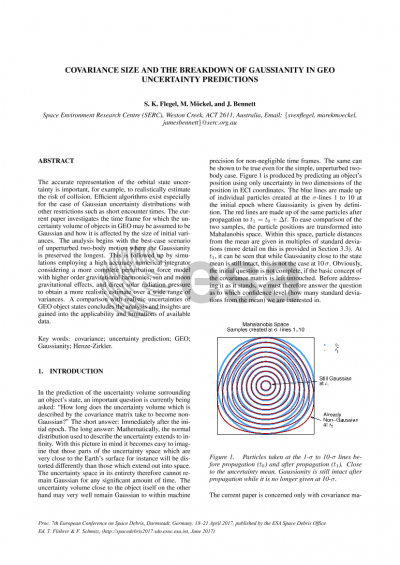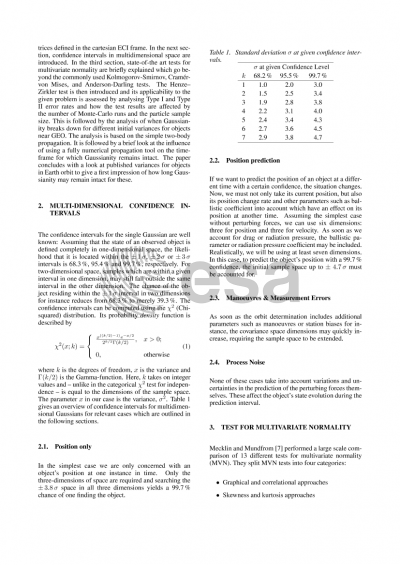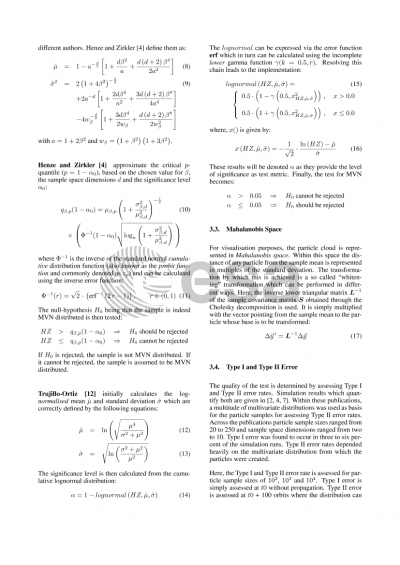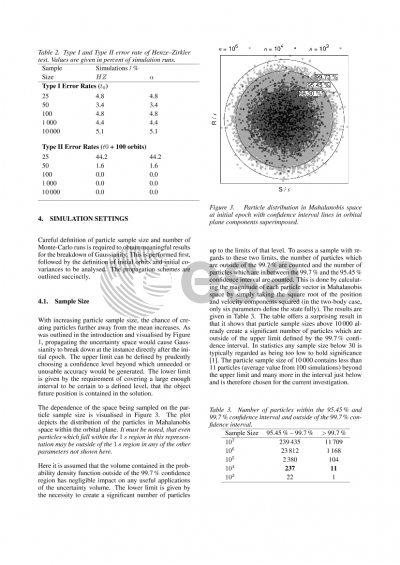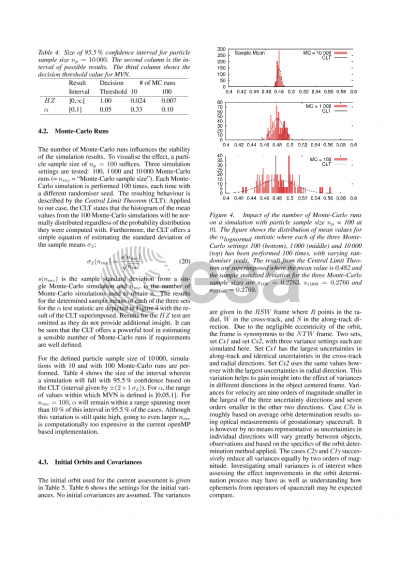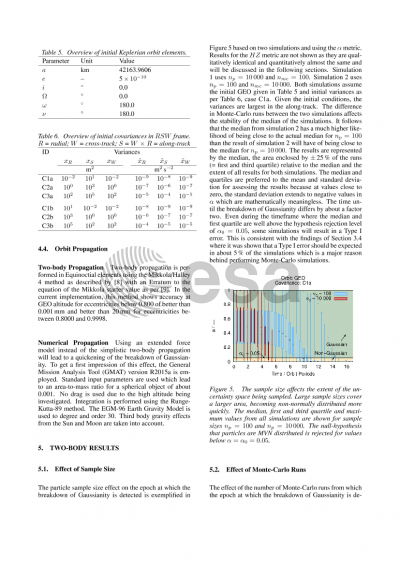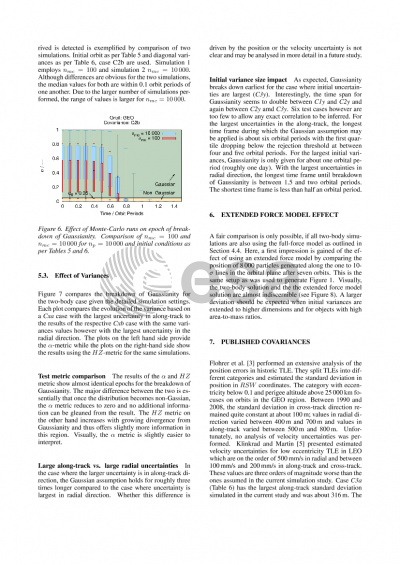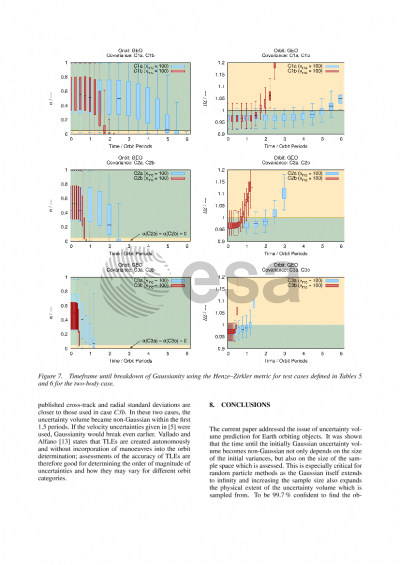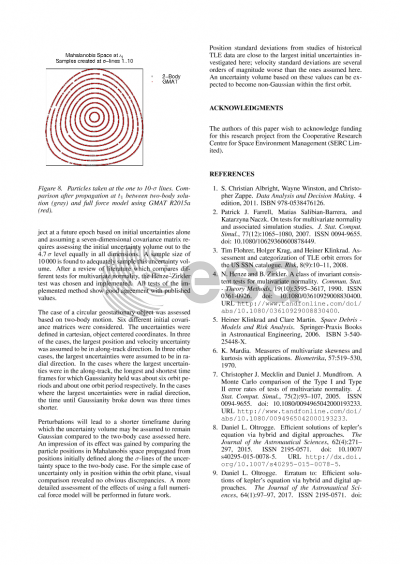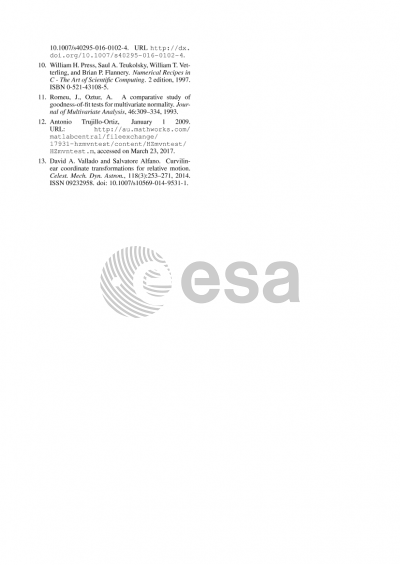Document details

Abstract
It has become a common understanding that the uncertainty space for an object’s orbital state will become non-Gaussian under certain circumstances. Accurate representation of the uncertainty is important, for example, to realistically estimate the risk of collision. Efficient algorithms exist especially for the case of Gaussian uncertainty distributions with other restrictions such as short encounter times. The current paper aims to shed some light on the time frame for which the uncertainty volume of objects in GEO may be assumed to be Gaussian and how it is affected by the size of initial variances. The analysis begins with the best-case scenario of unperturbed two-body motion where the Gaussianity is preserved the longest. This is followed up by simulations employing a high accuracy numerical integrator considering a more complete perturbation force model with higher order gravitational harmonics, sun and moon gravitational effects, and direct solar radiation pressure to obtain a more realistic estimate over a wide range of variances. A comparison with realistic uncertainties of GEO object states concludes the analysis to gain some insight into the applicability and limitations of available data.
Preview
